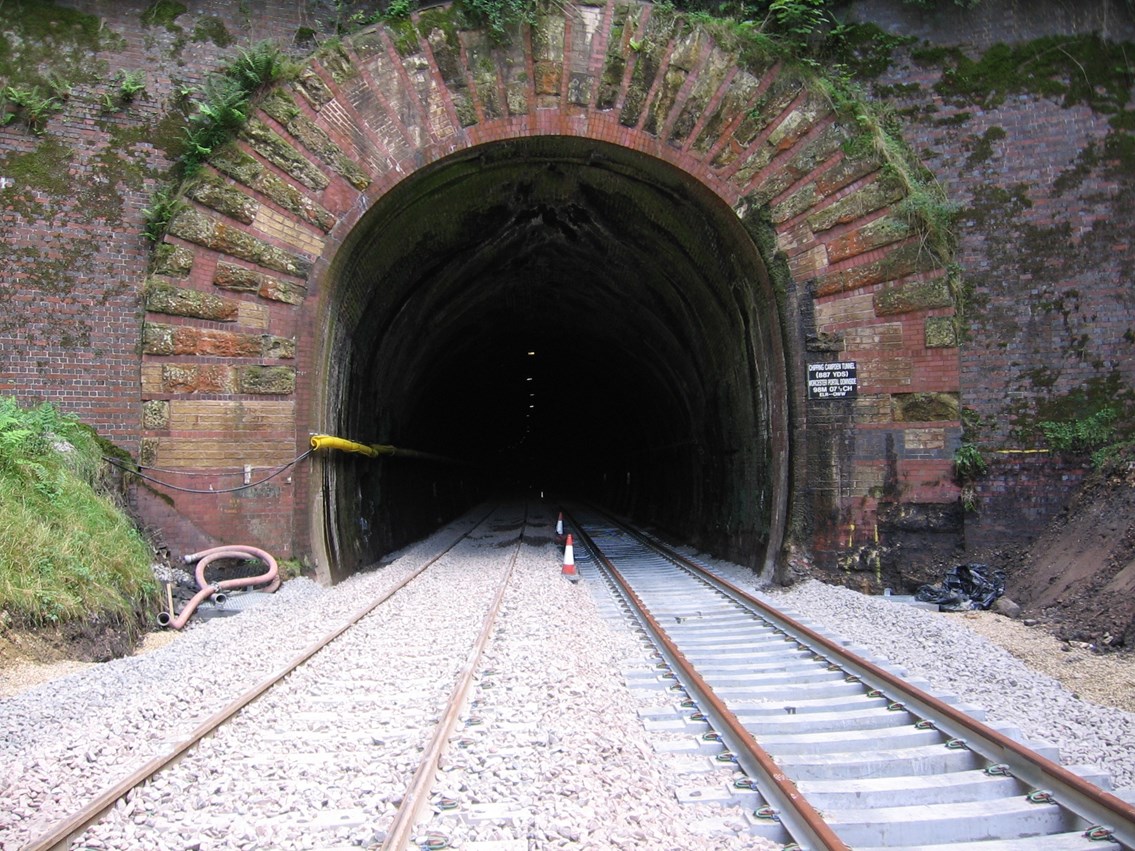Friday 28 Aug 2009
NORTH COTSWOLD LINE PRIMED FOR EXTRA TRACK
- Region & Route:
- Wales & Western: Western
- | Wales & Western
Preparatory work on the North Cotswold line is progressing on target, and Network Rail expects services to return to normal after the August bank holiday.
Over the last six weeks, a team of 100 engineers have been working round the clock to make room on the line, so that an extra track can be built next year.
Engineers have repositioned nearly 10 miles of existing track to make room for new ones; constructed 21 miles of new surface concrete cable route; installed 30 miles of new cable and relocated 60 sets of signal equipment.
In addition, engineers have also been working in 157 years old Chipping Camden tunnel (used to be Mickleton tunnel), designed by Brunel, installing a new track using a unique state-of-the-art track construction train.
More than 12,000 tonnes of materials were removed from the 811m long tunnel. A new 2,000m drain was also installed to alleviate flooding in the future.
As part of its ongoing effort to reduce the impact of railway operation on the environment, Network Rail has also recycled a large volume of ballast during this phase.
Chris Rayner, route director for Network Rail said: “We are grateful to passengers for their patience whilst we carry out this work. With this phase completed, this means there will be little need for closing the line for a long period of time again next year.
“Our work has progressed very smoothly over the past few weeks and we expect normal services to resume on Tuesday as planned. There is still much work to be done, we will continue to work hard on finalising the design for the next phase of work.”
The North Cotswolds line is a particularly congested part of the railway, which means even small delays tend to have a huge impact on rail services in the area. Once complete in early 2011, the redoubling of the track will provide extra capacity for more trains to carry more customers should demand continue to increase, and help sustain improved performance in the area.
Notes to editors
Since the Oxford Worcester and Wolverhampton line was singled in the late 1960s, the existing track now follows a route that consists of sections of the old south-bound or north-bound lines. In many places these existing tracks have also been ‘centred’, leaving insufficient track bed for the new lines to be laid. Therefore the challenge is to reposition the existing track whilst constructing a formation fit for both lines.Contact information
Passengers / community members
Network Rail national helpline
03457 11 41 41
Latest travel advice
Please visit National Rail Enquiries
Journalists
Network Rail press office -Western route
MediaRelationsWestern@networkrail.co.uk
About Network Rail
We own, operate and develop Britain's railway infrastructure; that's 20,000 miles of track, 30,000 bridges, tunnels and viaducts and the thousands of signals, level crossings and stations. We run 20 of the UK's largest stations while all the others, over 2,500, are run by the country's train operating companies.
Usually, there are almost five million journeys made in the UK and over 600 freight trains run on the network. People depend on Britain's railway for their daily commute, to visit friends and loved ones and to get them home safe every day. Our role is to deliver a safe and reliable railway, so we carefully manage and deliver thousands of projects every year that form part of the multi-billion pound Railway Upgrade Plan, to grow and expand the nation's railway network to respond to the tremendous growth and demand the railway has experienced - a doubling of passenger journeys over the past 20 years.
Follow us on Twitter: @networkrail
Visit our online newsroom: www.networkrailmediacentre.co.uk

